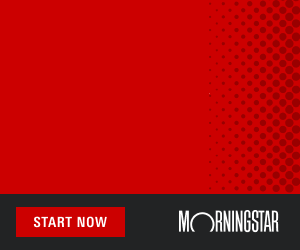Consumer price inflation in the December quarter came in lower than forecast, raising hopes for an earlier than expected rate cut from the Reserve Bank. The quarterly CPI of 4.1% was under the forecast of 4.3%, but well ahead of the monthly figure for December of 3.4%. Quarter-on-quarter inflation slowed to an increase of 0.6% in the three months to December.
The quarterly CPI was well down on the 7.8% at the end of 2022, while the monthly indicator of 3.6% was less than half the 8.4% rate for December 2022. Core inflation as measured by the trimmed mean method fell for the fourth quarter in a row to 4.2% from 5.1% in the September quarter and the peak of 6.8% in the December 2022 quarter.
Both outcomes were lower than the Reserve Bank forecast in its last Statement on Monetary Policy for 2023 in November when it forecast a CPI and trimmed mean figure of 4.5% for the quarter and the year.
The outcome won't see the RBA change at next week's meeting – the first two-day meeting ever – but it will give the bank something to think about with few signs of embedded inflation.
The news of the better-than-expected inflation saw the value of the Aussie dollar drop from 66 US cents to around 65.85, but the ASX 200 leapt more than 20 points in a matter of minutes.
Michelle Marquardt, ABS head of prices statistics, said, "The CPI rose 0.6 per cent in the December quarter, lower than the 1.2 per cent rise in the September 2023 quarter. This was the smallest quarterly rise since the March 2021 quarter," which was in the middle of the pandemic and well before prices got an enormous kick higher with the Russian invasion of Ukraine in late February 2022.
Over the year, a 16.2% surge in insurance costs led the way, helped by a 6.1% rise in housing, a 6.6% rise in alcohol and tobacco (excise price rises), and a 4.5% rise in food and non-alcoholic beverages.
The most significant contributors to the December quarter rise were Housing (up 1%), Alcohol and tobacco (+2.8%), Insurance and financial services (+1.7%), and Food and non-alcoholic beverages (+0.5%).
The ABS said the rise in housing costs for yet another quarter was driven by new dwellings purchased by owner-occupiers (+1.5%), Rents (+0.9%), and Utilities (+0.6%). "Higher labor and material costs contributed to price rises this quarter for construction of new dwellings. The 1.5 per cent increase is slightly higher than the 1.3 per cent rise in the September 2023 quarter," Ms. Marquardt said.
Rental prices slowed to a 0.9% rise from the 2.2% jump in the previous quarter as the size of the rise was "moderated by changes to Commonwealth Rent Assistance. Excluding the changes to rent assistance, rental prices would have increased by 2.2 per cent in the December 2023 quarter," Ms. Marquardt pointed out.
"Tobacco rose 7.0 per cent, following the introduction of the 5 per cent annual tobacco excise indexation and biannual Average Weekly Ordinary Time Earnings increase, which were both applied on 1 September 2023."
Insurance had a strong quarterly movement of 3.8%, following the 2.8% rise in September 2023 quarter. "The increase in Insurance was due to higher premiums across motor vehicle, house, and home contents insurance. Over the past twelve months, Insurance rose 16.2 per cent, making it the largest annual rise since March 2001," Ms. Marquardt said. That is a direct result from more people driving (2023 had one of the highest death and injury tolls in the past decade) and by the continuing fallout from La Nina wet weather, which has returned in the most vulnerable areas of northern NSW and southeast Queensland.
The 0.5% increase in the cost of food and non-alcoholic beverage prices was the smallest since September 202, driven by rising prices of eating out and takeaway foods (+0.9 per cent) and Bread and cereal products (up 1.9%). Partially offsetting the quarterly rise were price falls for Meat and seafood (-1.2%) and Fruit and vegetables (-1.2%). "Meat and seafood prices fell this quarter due to increased supply leading to price drops for Lamb and goat of 12.1 per cent, and Beef and veal of 1.5 per cent," Ms. Marquardt said.




